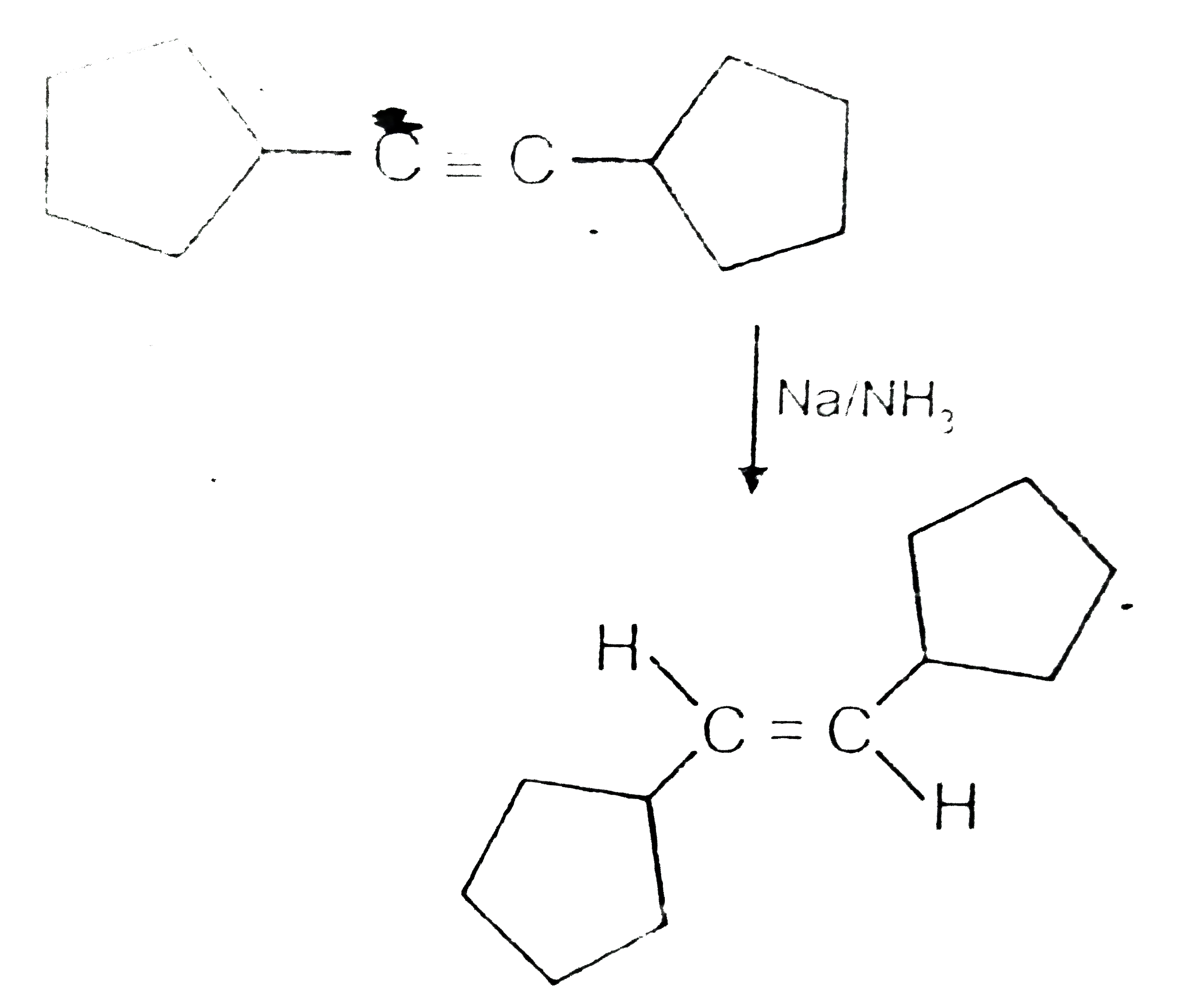Intermediate formed during E2 reaction is -
Carbocation
Carbanion
Free radical
Intermediate is not Formed
The correct Answer is:D
To answer the question regarding the intermediate formed during an E2 reaction, we can follow these steps:
1. Understanding E2 Reaction:
- E2 stands for "bimolecular elimination". It is a type of elimination reaction where the rate of reaction depends on the concentration of both the substrate and the base.
2. Mechanism of E2 Reaction:
- The E2 reaction occurs in a single concerted step, meaning that the bond-breaking and bond-forming processes happen simultaneously without any intermediate being formed.
3. Role of the Base:
- A strong base (e.g., sodium methoxide) abstracts a β-hydrogen from the substrate. This β-hydrogen is located on the carbon adjacent to the carbon bearing the leaving group (e.g., bromine).
4. Leaving Group:
- The leaving group (bromine in this case) departs as the base abstracts the hydrogen. This process leads to the formation of a double bond between the α and β carbons.
5. Transition State:
- Although there is no intermediate, a transition state is formed during the reaction. This transition state represents a high-energy configuration where bonds are partially broken and formed.
6. Final Product:
- The final product of the E2 reaction is an alkene, formed by the elimination of the leaving group and the β-hydrogen.
7. Conclusion:
- Since the E2 reaction does not involve the formation of any stable intermediates (like carbocations, carbon anions, or free radicals), the correct answer to the question is that no intermediate is formed during the E2 reaction.
Final Answer:
No intermediate is formed during the E2 reaction.
---
- E2 stands for "bimolecular elimination". It is a type of elimination reaction where the rate of reaction depends on the concentration of both the substrate and the base.
- The E2 reaction occurs in a single concerted step, meaning that the bond-breaking and bond-forming processes happen simultaneously without any intermediate being formed.
- A strong base (e.g., sodium methoxide) abstracts a β-hydrogen from the substrate. This β-hydrogen is located on the carbon adjacent to the carbon bearing the leaving group (e.g., bromine).
- The leaving group (bromine in this case) departs as the base abstracts the hydrogen. This process leads to the formation of a double bond between the α and β carbons.
- Although there is no intermediate, a transition state is formed during the reaction. This transition state represents a high-energy configuration where bonds are partially broken and formed.
- The final product of the E2 reaction is an alkene, formed by the elimination of the leaving group and the β-hydrogen.
- Since the E2 reaction does not involve the formation of any stable intermediates (like carbocations, carbon anions, or free radicals), the correct answer to the question is that no intermediate is formed during the E2 reaction.
No intermediate is formed during the E2 reaction.
Topper's Solved these Questions
- ORGANIC REACTION MECHANISMS-IVBOOK - RESONANCE ENGLISHCHAPTER - ORGANIC REACTION MECHANISMS-IVEXERCISE - Exercise-1 Part-3
2 Videos
- ORGANIC REACTION MECHANISMS-IVBOOK - RESONANCE ENGLISHCHAPTER - ORGANIC REACTION MECHANISMS-IVEXERCISE - Exercise-2 Part-1
11 Videos
- ORGANIC REACTION MECHANISMS-IVBOOK - RESONANCE ENGLISHCHAPTER - ORGANIC REACTION MECHANISMS-IVEXERCISE - APSP PART-3
22 Videos
- ORGANIC REACTION MECHANISMS - IIBOOK - RESONANCE ENGLISHCHAPTER - ORGANIC REACTION MECHANISMS - IIEXERCISE - APSP Part - 3
22 Videos
- PERIODIC TABLE & PERIODICITYBOOK - RESONANCE ENGLISHCHAPTER - PERIODIC TABLE & PERIODICITYEXERCISE - ORGANIC CHEMISTRY(BASIC CONCEPTS)
27 Videos
Similar Questions
Knowledge Check
The intermediates formed during the reaction :
C6H5CH2COOAg+Br2CCl4−−→ΔC6H5CH2BrA BC6H5.CH2CBr∗D
BC6H5.CH2CBr∗D
Which of the following is an intermediate formed in the reaction shown below ?
CH3−O∣∣C−Cl+NH3→Intermediate→productACH3−⊕NH3BCH3−O∣∣C⊕CCl−OH∣C∣⊕NH3−ClDCH3−O−∣C∣⊕NH3−ClWhich represents an intermediate formed in the reaction of toluene and chlorine at elevated temperature in sunlight?
A B
B C
C D
D
Which Intermediate formed during addition of halogen on alkenes ?
View Solution_CHE_E06_275.png) The intermediate formed in the above reaction is a
The intermediate formed in the above reaction is a
View SolutionThe intermediate formed in aldol condensation is
View SolutionConsider the following reaction
 The reactive intermediate invovled in this reaction is
The reactive intermediate invovled in this reaction is
View SolutionWhich type of intermediate (A) is formed during the reaction?
CH3CH2−N=N−CH2CH3heat−−→(A)+N2
View Solution